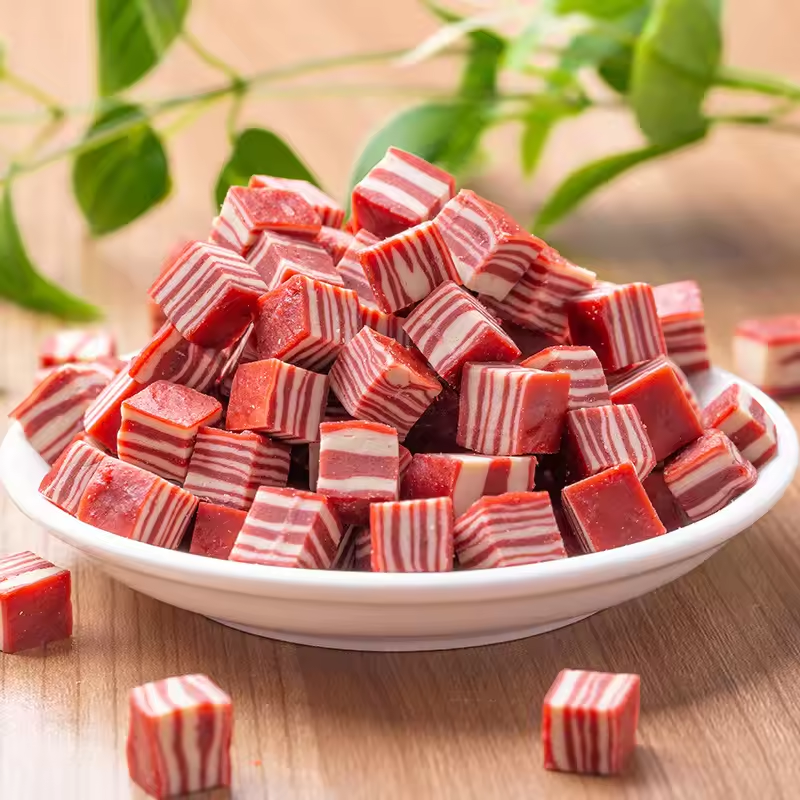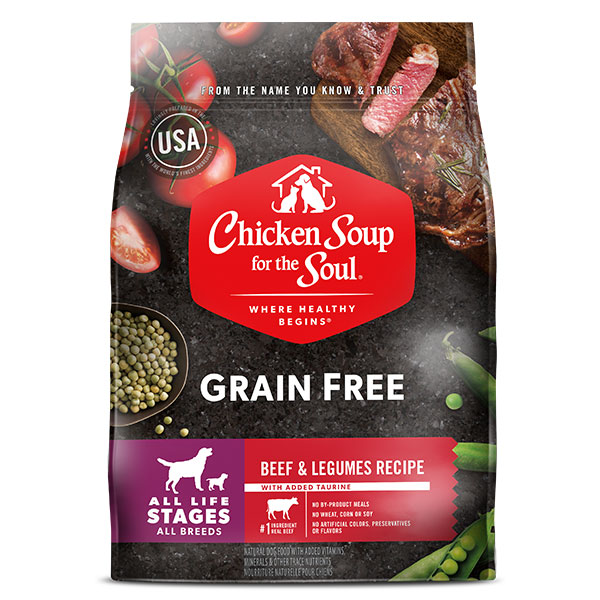Introduction
Dog owners are increasingly interested in the dietary needs of their pets. One topic that has gained significant attention is grain free dog food. This guide will explore the benefits and considerations of grain-free diets for dogs, helping you understand whether this type of food is suitable for your furry friend.

What is Grain-Free Dog Food?
Defining Grain-Free Diets in Canines
Grain-free dog food is precisely what it sounds like: dog food that does not contain grain. Common grains such as wheat, corn, rice, and barley are excluded. Instead, these foods are often made with alternative carbohydrates like sweet potatoes, lentils, peas, and various types of meat. The shift toward grain-free diets is partly influenced by the increasing number of dogs with allergies and sensitivities to grains.
The goal of these diets is to mimic a dog’s ancestral diet. Dogs are primarily carnivorous animals, with a digestive system designed to break down proteins and fats rather than grains. Many dog owners believe that by feeding their pets a grain-free diet, they can ensure better health and digestion. However, it is essential to understand what grain-free means. The absence of grains does not automatically mean a food is superior or healthier.
Nutritional Components of Grain-Free Dog Foods
While grain-free dog foods do not include grains, they still need to be nutritionally balanced. The best grain-free dog foods will provide adequate protein, fats, and other important nutrients. Protein often comes from meat sources such as chicken, beef, or fish. Healthy fats may come from fish oil or chicken fat. In addition to these primary ingredients, grain-free foods often include fruits and vegetables that provide vitamins, minerals, and fiber.
These foods typically have a high protein content, which can be beneficial for active breeds. Additionally, the carbohydrate sources in grain-free foods can offer different nutritional profiles compared to traditional dog foods. This variability can help address the unique dietary needs of individual dogs.

Benefits of Grain-Free Dog Food
Potential Health Advantages
Many dog owners choose grain-free diets for their pets due to potential health benefits. First, it may help dogs with food sensitivities or allergies. Some dogs may have trouble digesting grains, resulting in gastrointestinal issues like gas, bloating, or diarrhea. A grain-free diet may alleviate these symptoms.
Secondly, grain-free diets often lead to increased protein intake. Dogs require protein for muscle maintenance and growth. High-quality meat protein can support muscle health, especially in active or working dogs. The increased protein content in grain-free dog foods may also lead to higher energy levels and improved overall stamina.
Another benefit is related to weight management. Some dog owners report that their pets maintain a healthy weight better on a grain-free diet. This may be due to lower carbohydrate content and higher protein levels, which can result in a feeling of fullness. Maintaining a healthy weight is essential for long-term health and can prevent a variety of health issues such as diabetes and joint problems.
Improved Skin and Coat Condition
Some dog owners notice improvements in their pets’ skin and coat condition when switching to grain-free food. This improvement can be due to the absence of grains, which are known allergens for some dogs. Healthier skin and shinier coats may result from better-quality ingredients, such as omega fatty acids found in fish oils.
Moreover, better skin health can minimize issues such as itching and flaking. Pet owners often report fewer skin irritations and allergies after switching their dogs to grain-free diets. Therefore, if your dog suffers from dry skin or other dermal issues, considering a grain-free diet may be worth discussing with the veterinarian.
Considerations When Choosing Grain-Free Dog Food
The Risks of Grain-Free Diets
Despite the advantages, there are concerns surrounding grain-free dog diets. One significant issue is related to canine dilated cardiomyopathy (DCM). DCM is a heart condition that has been linked to certain types of dog food, including some grain-free options. Specific ingredients, such as peas, lentils, or potatoes, may pose risks when consumed in high amounts. Research is still ongoing, and it is crucial to discuss with your vet before making any diet changes.
It is also essential to recognize that not all dogs require a grain-free diet. Many dogs thrive on traditional dog foods that include grains. Eliminating grains may not necessarily be beneficial for all dogs. It is vital to observe how your pet reacts to dietary changes and to remain attentive to their health and well-being.
Nutritional Balance and Ingredient Quality
When selecting a grain-free dog food, ingredient quality is essential. Some brands may use low-quality ingredients or fillers, which can offset the benefits of a grain-free diet. Look for foods that list high-quality protein sources as the primary ingredients. Avoid foods with vague labels and by-products. Aim for brands committed to quality and transparency.
Additionally, ensure that the food contains appropriate vitamins and minerals. A balanced diet is crucial to maintaining your dog’s overall health. It may also be beneficial to consult with a veterinarian or a pet nutritionist for specific dietary recommendations tailored to your dog’s needs.

Making the Switch to Grain-Free Dog Food
Transitioning Gradually
If you decide to switch your dog to a grain-free diet, make the transition gradual. Sudden dietary changes can upset your dog’s stomach and lead to gastrointestinal issues. Gradually mix the new grain-free food with your dog’s current food over several days.
Start with a small portion of the new food and gradually increase it while decreasing the amount of old food. Monitor your dog for any signs of distress, such as vomiting or diarrhea. This gradual approach helps your dog’s digestive system adjust to the new diet without causing discomfort.
Watching for Allergic Reactions
As you introduce the new grain-free dog food, watch for any signs of allergies or other adverse reactions. Symptoms can include itching, scratching, ear infections, digestive upset, and changes in behavior. If you notice any concerning symptoms, consult your veterinarian.
It is also wise to keep a food diary. Note any changes in your dog’s health, energy levels, coat condition, and behavior. This record will help you track any positive or negative changes and provide useful information for your vet.
Common Questions About Grain-Free Dog Food
Is Grain-Free Dog Food Right for My Dog?
Choosing the right diet for your dog involves various factors, such as age, breed, activity level, and health issues. Grain-free diets can work wonders for some dogs but may not be necessary for others. It is always best to consult with a veterinarian before making changes.
Are Grain-Free Diets More Expensive?
Grain-free dog foods can be more expensive than traditional dog foods that contain grains. This price difference relates to the sourcing of high-quality ingredients and the manufacturing process. However, many dog owners are willing to pay more for perceived health benefits.
Can Grain-Free Diets Lead to Weight Gain?
Some grain-free diets may be higher in calories due to increased protein and fats. This can lead to weight gain if not monitored. Owners should measure their pets’ food portions and ensure they receive adequate exercise to maintain a healthy weight.
Conclusion: Making Informed Choices About Your Dog’s Diet
In summary, grain-free dog food can offer specific benefits for certain dogs, particularly those with food sensitivities or allergies. A high-protein, balanced diet can improve energy levels, skin condition, and weight management. However, it’s essential to understand that grain-free does not equate to better. Consider your dog’s individual needs and consult with a veterinarian.
Always prioritize quality ingredients and nutritional balance when choosing dog food. A thoughtful approach to your dog’s diet can lead to a happier and healthier life for your furry friend. As dog ownership evolves, so do our understanding and options for providing the best nutrition possible. Stay informed and make choices that support your dog’s health and well-being.